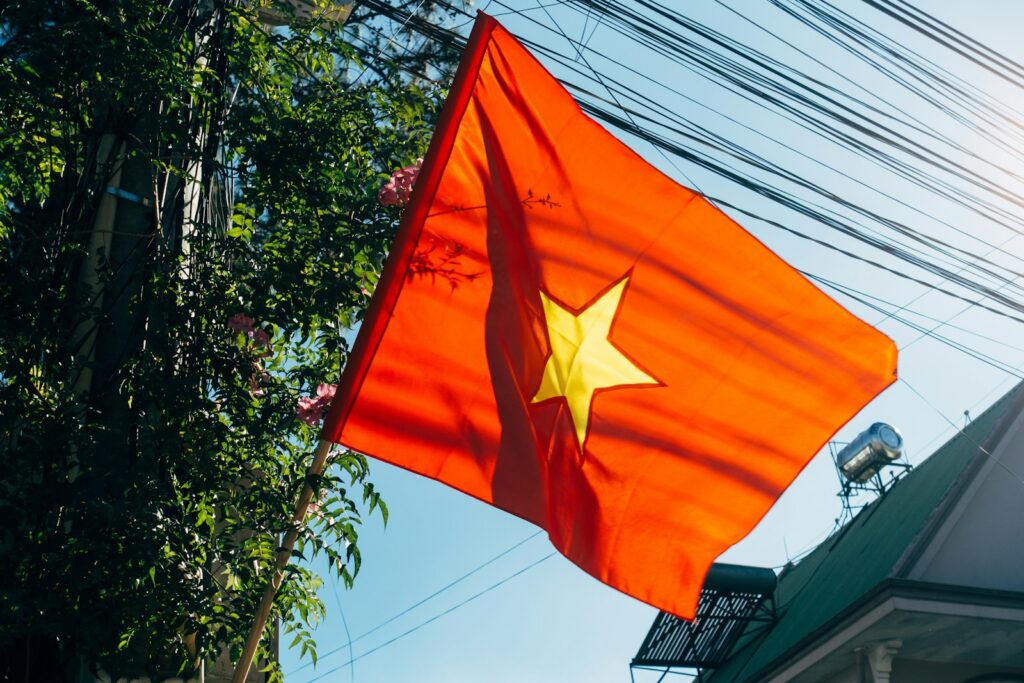
Having a multilingual website opens up new opportunities for reaching a wider audience. It allows businesses to cater to customers in their native languages, improving engagement and conversion rates. With more than 7,000 languages spoken around the world, translating your website into multiple languages can help you tap into global markets and foster strong relationships with diverse audiences.
Introduction: Benefits of Multilingual Websites and Importance of Translation to Vietnamese
The Importance of Translation to Vietnamese
Vietnamese is spoken by millions of people across the globe. As the official language of Vietnam, it is a key language in Southeast Asia. Whether you are targeting the rapidly growing market in Vietnam or reaching out to the Vietnamese diaspora worldwide, offering your content in Vietnamese can significantly expand your reach.
Vietnam is one of the fastest-growing economies in the world, and its digital landscape is rapidly evolving. A Vietnamese translation of your website can help you better connect with local users, offering them a personalized and seamless browsing experience. It also enhances your website’s SEO performance by improving its visibility in search results for Vietnamese-speaking users. A website in Vietnamese makes it easier for people to understand your message and increases trust in your brand.
The Benefits of Having a Vietnamese Version of Your Website
There are many advantages to providing a Vietnamese version of your website. It helps to build credibility and trust, increases your potential customer base, and boosts user experience.
Businesses that engage with users in their native language are more likely to gain customer loyalty and higher conversion rates. Furthermore, a multilingual website helps with localization, ensuring that your content is not just translated but culturally appropriate for the Vietnamese market.
See also: Increasing Conversion Rates in Multilingual Websites
Vietnamese Language
Basic Information about the Vietnamese Language
Vietnamese is the official language of Vietnam, spoken by over 90 million people. It belongs to the Austroasiatic language family and is primarily spoken in Vietnam but also by Vietnamese communities around the world. The language has distinct regional dialects, which can vary in pronunciation, vocabulary, and tone. Despite these differences, the standardized Vietnamese language, based on the Hanoi dialect, is used for formal communication and media.

History of the Vietnamese Language
Vietnamese has a rich linguistic history influenced by various languages and cultures. Over the centuries, the language has incorporated elements from Chinese, French, and other languages due to Vietnam’s history of foreign occupation and trade. During the 10th century, the Vietnamese language began using a modified version of Chinese characters, known as Chữ Nôm, before switching to the Latin-based script in the 17th century under Portuguese and French influence. This adaptation made the language more accessible to a wider audience.
How Easy is It to Learn, Speak, and Understand Vietnamese?
Learning Vietnamese can be challenging for speakers of languages that do not use tonal systems. Vietnamese is a tonal language, meaning that the meaning of a word can change based on its tone. There are six distinct tones in Vietnamese, which can make pronunciation difficult for beginners. However, the Vietnamese language is relatively easy to read and write once you learn the Latin-based alphabet, as it follows a straightforward phonetic system.
For English speakers, learning Vietnamese grammar can be simpler than some other Asian languages. Vietnamese grammar does not involve tenses or complex conjugation rules. Sentence structure tends to follow a subject-verb-object (SVO) order, similar to English. There are no articles (like “the” or “a”), and pluralization is typically understood through context rather than changing word forms.
Structure, Vocabulary, and Grammar of Vietnamese
Vietnamese grammar is less complex compared to many other languages. It does not include conjugation of verbs or changes in noun forms, making it more straightforward for learners. The language uses a subject-verb-object (SVO) sentence structure, similar to English. In addition, there are no articles or gendered nouns, further simplifying grammar rules.
The vocabulary of Vietnamese includes loanwords from French, Chinese, and English. While the basic vocabulary is primarily native, these borrowed terms are used in modern contexts. Common loanwords are found in areas such as technology, food, and government, reflecting the language’s historical influences.
In terms of writing, Vietnamese uses a Latin-based alphabet, which was introduced in the 17th century by French missionaries.
This makes it easier for speakers of other Latin-alphabet-based languages to read and write in Vietnamese. The use of diacritical marks for tones and specific vowel sounds gives Vietnamese its distinct phonetic style.
See also: Why Did Vietnam Adopt The Latin Alphabet?
Vietnamese-speaking People
Population That Speaks Vietnamese
Vietnamese is spoken by over 90 million people worldwide. It is the native language of the vast majority of Vietnam’s population, making it the 17th most spoken language in the world. In addition to Vietnam, there are significant Vietnamese-speaking communities in countries such as the United States, Australia, France, and Canada. The Vietnamese diaspora has contributed to the global spread of the language, further increasing its reach and significance.

Vietnamese-speaking Countries
Vietnam is the primary country where Vietnamese is the official language. The language is used in all forms of communication, from government and education to media and daily life. As the most widely spoken language in the country, Vietnamese plays a crucial role in shaping the culture and identity of the Vietnamese people.
Besides Vietnam, there are other regions and countries with sizable Vietnamese-speaking populations. For example, countries like the United States, Australia, and France have significant Vietnamese communities. These communities, often formed by migration, have helped to sustain and promote the Vietnamese language outside of its country of origin. In these regions, Vietnamese is used in cultural practices, business, and family life, making it a language of importance even outside of Vietnam’s borders.
Countries Where Vietnamese is an Official Language
Vietnamese is the official language of Vietnam. This status ensures its widespread use in government, media, education, and business within the country. The government of Vietnam has implemented policies to promote the use of Vietnamese in all sectors, ensuring it remains the dominant language.
Although Vietnamese is not an official language in other countries, it is widely spoken in places with large Vietnamese populations. In countries like the United States, Canada, and France, Vietnamese is often used as a second language in community centers, schools, and businesses. These nations have adopted Vietnamese as a significant language for communication, especially in areas with higher concentrations of Vietnamese immigrants.
Countries Where People Speak Vietnamese
Vietnamese is spoken by millions of people worldwide, especially in regions with significant Vietnamese immigrant populations. In addition to the United States, Australia, and France, countries like the United Kingdom, Germany, and Canada have sizable Vietnamese-speaking communities. These communities play an important role in maintaining the language through cultural activities, media outlets, and local businesses.
While Vietnamese is primarily spoken in these diaspora communities, its use is often limited to informal settings. In these regions, Vietnamese is spoken within families, cultural centers, and specific neighborhoods where there are large Vietnamese populations. It serves as a bridge between generations, maintaining cultural ties and supporting communication among family members who may not speak the dominant language of their new country.
Understanding where Vietnamese is spoken and its role in different communities can help business owners make informed decisions about localization and translation.
See also: 5 Reasons a Multi-Language Website is Beneficial for your Business
Vietnamese on the Internet
The Reach of Vietnamese on the Internet
Vietnamese is one of the most widely used languages on the Internet. With Vietnam having a large and growing online user base, the number of Vietnamese-speaking Internet users continues to rise. According to recent estimates, millions of people in Vietnam access the Internet regularly, making Vietnamese an important language for digital communication. Websites, social media platforms, and e-commerce websites in Vietnam are increasingly being developed and optimized in Vietnamese to cater to the digital needs of users in the country.

Why It Is Important to Have a Vietnamese Version of Your Website
Offering a Vietnamese version of your website is essential for reaching a broad audience in Vietnam. As the digital market in Vietnam continues to grow, having your website in Vietnamese ensures you can effectively target and engage with local users. It helps build trust and credibility with Vietnamese speakers, making your content more accessible and appealing. In addition, businesses that provide content in the local language often see better customer retention and conversion rates.
Vietnam’s e-commerce sector is expanding rapidly, and an increasing number of consumers are turning to online platforms for shopping, services, and information. Having a website in Vietnamese can significantly boost your chances of capturing the local market and expanding your business in the region. This is especially true for businesses offering products or services that cater specifically to Vietnamese consumers, as local language content enhances user experience and drives sales.
SEO Benefits of Translating Your Website to Vietnamese
A Vietnamese version of your website can improve your search engine ranking within the country. Google and other search engines prioritize local content in their search results, and providing content in Vietnamese can help your website rank higher for local search queries. Localized content not only boosts your SEO performance in Vietnam but also ensures that your website is discoverable by users searching in Vietnamese.
Search engine optimization (SEO) is crucial for online success, especially in competitive markets like Vietnam. Translating your website into Vietnamese gives you a significant advantage in targeting the local market, ensuring that Vietnamese speakers can easily find your site. Additionally, local keywords, optimized meta descriptions, and translated content can help your website attract relevant traffic and increase engagement.
The Growing Role of Vietnamese in the Digital Economy
Vietnam is becoming an increasingly important player in the global digital economy. The country’s young, tech-savvy population is rapidly embracing online platforms, social media, and e-commerce. As a result, businesses looking to expand their reach in the digital space must prioritize the Vietnamese language to connect with this growing audience.
Translating your website to Vietnamese positions you to tap into this vibrant market and build a strong online business in the region.
See also: How To Launch a Successful Multilingual Business Online?
How to Translate a WordPress Site to Vietnamese
Major Methods of Translating a WordPress Site to Vietnamese
There are several ways to translate a WordPress site to Vietnamese, ranging from manual translation to automated tools. The choice of method depends on your website’s size, budget, and the level of accuracy needed. Manual translation requires hiring professional translators or using in-house teams, which can be time-consuming and costly. However, it offers complete control over the translation quality.

Alternatively, machine translation or translation plugins can automate the process, significantly speeding up the translation. Translation plugins, like Autoglot, offer a more efficient solution for translating WordPress sites. These tools automatically translate the content, ensuring that your website is multilingual with minimal effort.
Using Manual Translation for a WordPress Site
Manual translation involves translating each piece of content by hand. While this method offers high-quality translations, it can be labor-intensive. If you have a website with a lot of pages or ongoing content creation, manual translation may take too long and become costly. This method is most useful when you require perfect translations for specific parts of your site, such as legal or technical content, where accuracy is critical.
Manual translation is typically performed by professional translators or through a dedicated team. For WordPress sites, manual translation can be applied by creating separate language versions of each page or post. This can be achieved by either using WordPress’s built-in multilingual capabilities or adding language-specific plugins that handle the structure of multiple language versions.
Automated Translation with Plugins
Automated translation with plugins is a faster and more cost-effective way to translate a WordPress site. Translation plugins automatically detect the content on your website and translate it into your chosen languages. Many plugins use machine translation engines like Google Translate or Microsoft Translator, allowing for quick translations that require minimal human input.
The Autoglot WordPress translation plugin is one of the best tools for automating the translation of WordPress sites to Vietnamese. Autoglot provides full automation, allowing you to translate your site without needing manual intervention. This plugin translates content quickly, ensuring that your Vietnamese version is up-to-date and reflects the changes made to the original content.
Autoglot also offers key benefits, such as SEO compatibility, which ensures your translated pages maintain high search engine rankings. Using Autoglot’s translation plugin, you can translate your site into Vietnamese without worrying about losing SEO value or visibility. The plugin also ensures that translated content is fully optimized for local search terms and phrases.
Autoglot is an excellent tool for WordPress website owners who want to translate their content to Vietnamese automatically. With Autoglot, you don’t need to worry about managing translations manually or hiring additional translators. The plugin simplifies the process by translating your site content automatically, while ensuring that SEO remains intact.
See also: How To Automatically Translate WordPress Website?
Step-by-Step Guide to Translating a WordPress Site to Vietnamese
Step 1. Installing and Activating the Autoglot Plugin
The first step to translating your WordPress site to Vietnamese is to install and activate the Autoglot plugin.
- To do this, log in to your WordPress dashboard, go to “Plugins” and click “Add New.”
- In the search bar, type “Autoglot” and click “Install Now” next to the plugin.
- Once installed, click “Activate” to enable the plugin on your site.
Autoglot will now be integrated into your WordPress dashboard, making it easy to start translating your site’s content. Ensure that your website is ready to be translated by checking that all content is updated and ready for the translation process.
You may also download Autoglot directly from the official WordPress plugins repository.
Official Autoglot WordPress Repository
Step 2. Registering in the Autoglot Control Panel
After activating the plugin, the next step is to register in the Autoglot Control Panel. Once your account is created, you will be able to access the plugin’s features and settings using your unqiue free API key.
- To register, simply enter your email address and create a password.
- Once registered, you can log in to the Autoglot Control Panel and connect your website for automatic translations.
- This will allow you to manage your balance from a centralized location.
Autoglot Control Panel lets you control your translation expenses, track usage and order new translation packages.
Autoglot Control Panel
Step 3. Configuring the Language Switcher and SEO Settings
Next, configure the language switcher and SEO settings in the Autoglot plugin.
- The language switcher is an essential feature that allows users to easily switch between the original and translated versions of your site.
- You can customize the appearance and position of the language switcher on your website for maximum visibility.
- Additionally, Autoglot provides options to configure SEO settings for the translated content.
- This ensures that your Vietnamese pages are indexed properly by search engines and are SEO-friendly. Be sure to review and adjust these settings to maintain your site’s search engine visibility.
Step 4. Choosing Vietnamese Among Languages
Once the settings are configured, select Vietnamese as your target language for translation.
- Autoglot supports a variety of languages, so simply choose Vietnamese from the list of available languages.
- This will set Vietnamese as the primary language for translation, ensuring that all content on your site is automatically translated into Vietnamese.
- Autoglot will automatically detect and translate the content on your site, including posts, pages, and metadata.
- The plugin will handle the translation process without needing manual intervention, making it a quick and easy solution.
Step 5. Checking the Results of Automatic Translation
After the translation is complete, it’s important to review the results to ensure accuracy.
- While Autoglot provides a high level of accuracy in translations, you may want to double-check key areas of your site, such as product descriptions or specialized content.
- The plugin also allows you to make manual adjustments to the translation if needed.
- Your website is now available in Vietnamese, and users can seamlessly switch between the original and translated content.
- This makes it easier to reach a broader audience and engage with Vietnamese-speaking users.
The Autoglot plugin allows you to manually edit the translations directly within the WordPress editor.
How To Edit Translation in WordPress?
Conclusion
Challenges of Translating a WordPress Site to Vietnamese
Translating a WordPress site to Vietnamese comes with some challenges, particularly in terms of maintaining the accuracy and context of translations. While machine translation tools like Autoglot are highly effective, automated translations may occasionally miss nuances or cultural differences. It’s important to review translations, especially for specific content that requires high accuracy, such as legal terms or technical information.
Another challenge is ensuring that the translated content is SEO-friendly. Vietnamese language has its own set of rules for keywords, and some words may have different search volumes or meanings. Ensuring that your Vietnamese content is optimized for local search terms will help improve the visibility of your site in search engines.
Benefits of Translating a WordPress Site to Vietnamese
Despite the challenges, translating your WordPress site to Vietnamese offers significant benefits. It allows you to tap into the large Vietnamese-speaking population, expanding your reach to millions of potential visitors. A multilingual website can help increase engagement, build trust with your audience, and enhance your brand’s global presence.
Furthermore, having a Vietnamese version of your site can improve your website’s search engine rankings in Vietnam and other Vietnamese-speaking regions. By providing content in the native language, you can build a stronger connection with your Vietnamese-speaking audience and provide them with a better user experience.
Why Choose Autoglot for Translation
Autoglot offers an excellent solution for translating your WordPress site to Vietnamese, saving both time and effort. With its automated translation process, SEO compatibility, and ease of use, Autoglot ensures that your site is accurately translated while maintaining its search engine visibility. The plugin allows you to focus on content creation while it handles the complexities of translation.
If you want to effortlessly translate your WordPress site to Vietnamese, Autoglot is a reliable and efficient tool. Start using Autoglot today to reach your Vietnamese-speaking audience and enhance your website’s global reach.



